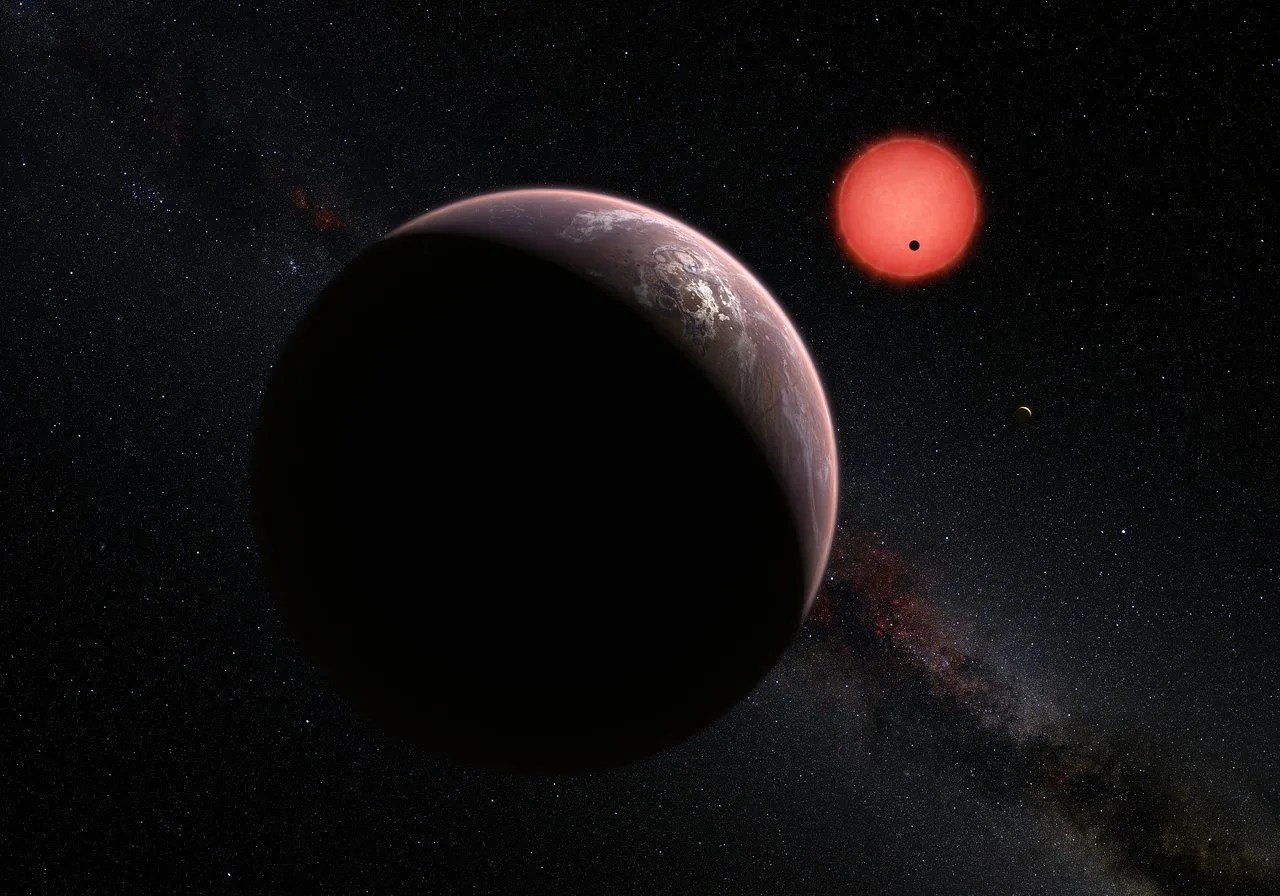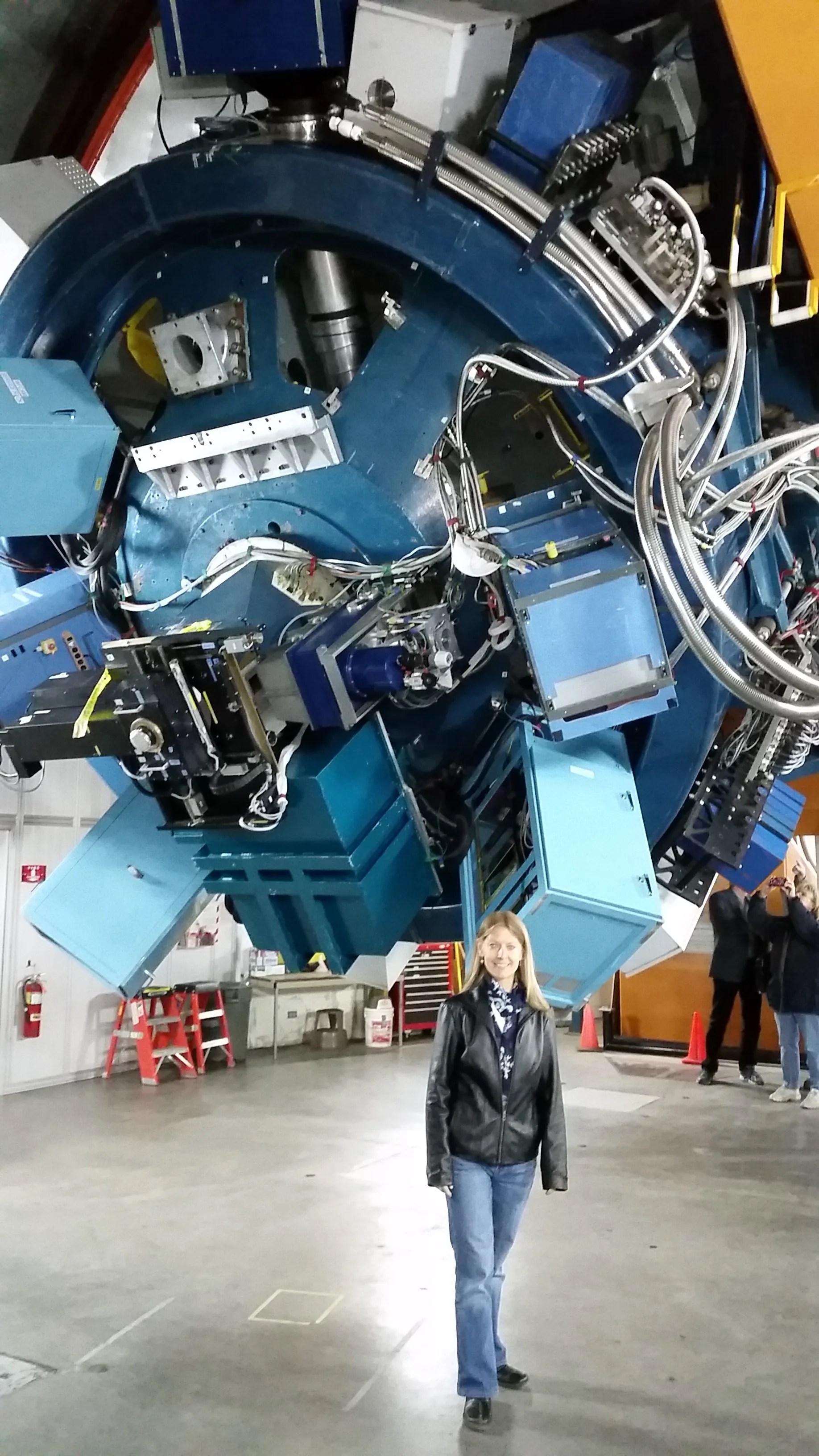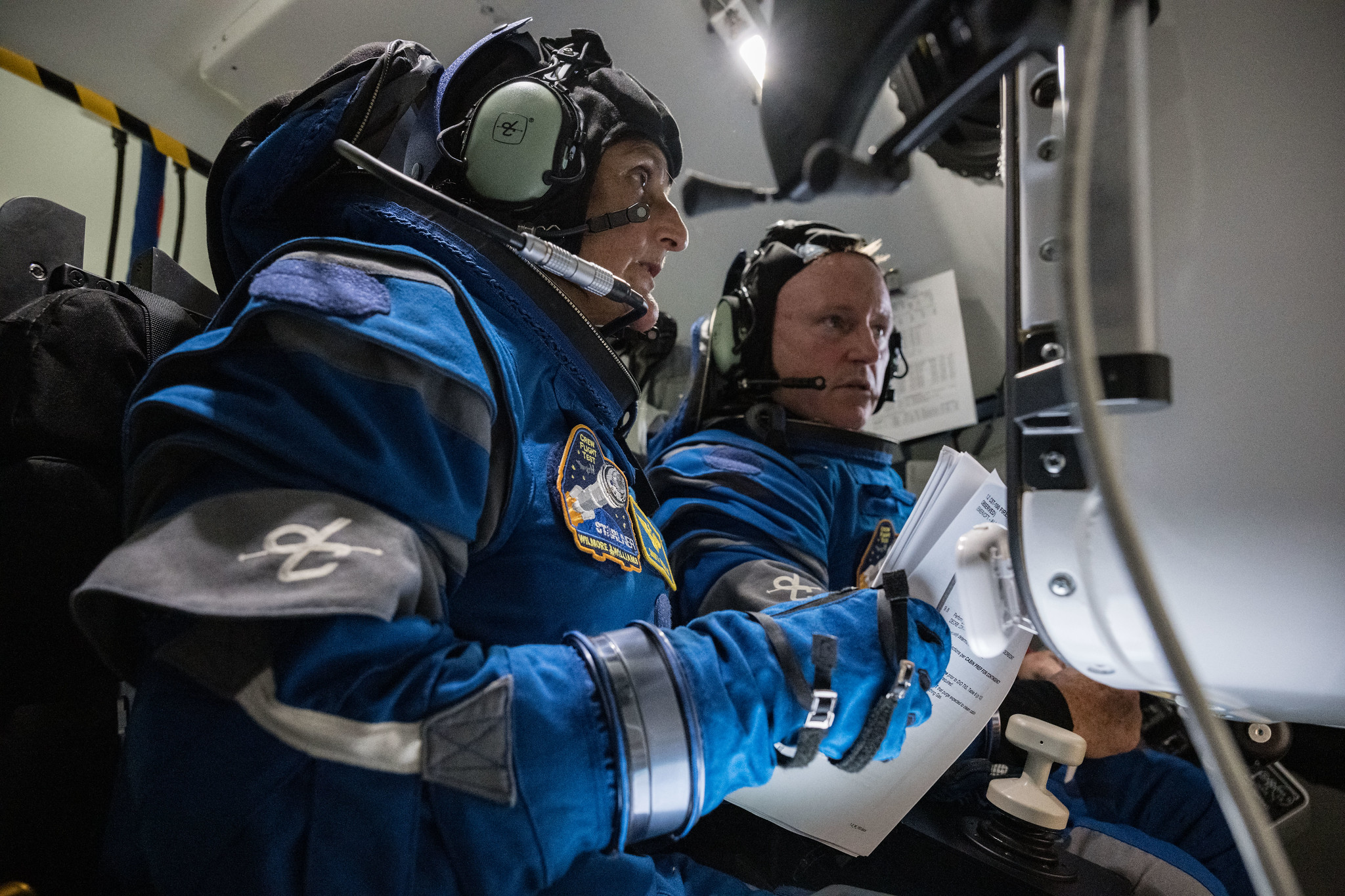5 min read
Astronomers using the TRAPPIST telescope at ESO’s La Silla Observatory have discovered three planets with sizes and temperatures similar to those of Venus and Earth, orbiting an ultra-cool dwarf star just 40 light-years from Earth.


Michaël Gillon of the University of Liège in Belgium, leading a team of astronomers including Susan M. Lederer of NASA Johnson Space Center, have used the TRAPPIST telescope to observe the star 2MASS J23062928-0502285, now also known as TRAPPIST-1. They found that this dim and cool star faded slightly at regular intervals, indicating that several objects were passing between the star and the Earth. Detailed analysis showed that three planets are present around the star.
TRAPPIST-1 is an ultra-cool dwarf star — it is much cooler and redder than the Sun and barely larger than Jupiter. Despite being so close to the Earth, this star is too dim and too red to be seen with the naked eye or even visually with a large amateur telescope. It lies in the constellation of Aquarius (The Water Carrier).
Follow-up observations with larger telescopes, including the HAWK-I instrument on ESO’s 8-metre Very Large Telescope in Chile, have shown that the planets orbiting TRAPPIST-1 have sizes very similar to that of Earth. Two of the planets have orbital periods of about 1.5 days and 2.4 days respectively, and the third planet has a less well-determined orbital period in the range 4.5 to 73 days.
"With such short orbital periods, the planets are between 20 and 100 times closer to their star than the Earth to the Sun. The structure of this planetary system is much more similar in scale to the system of Jupiter’s moons than to that of the Solar System," explains Michaël Gillon.
Although they orbit very close to their host dwarf star, the inner two planets only receive four times and twice, respectively, the amount of radiation received by the Earth, because their star is much fainter than the Sun. That puts them closer to the star than the so-called habitable zone for this system, defined as having surface temperatures where liquid water can exist, although it is still possible that they possess potentially habitable regions on their surfaces. The third, outer, planet’s orbit is not yet well known, but it probably receives less radiation than the Earth does, but maybe still enough to lie within the habitable zone. The new results will be published in the journal Nature on 2 May 2016.
NASA’s Hubble Space Telescope and K2, the Kepler spacecraft's second mission, will be observing TRAPPIST-1 and its planets later this year.
Fortuitously, two of these planets are transiting the star on May 4, an event that happens only once every two years as seen from Earth. Astronomers hope to make measurements of the atmospheres of both of these planets and look for evidence of water vapor. The Hubble Space Telescope can characterize the atmospheres of the planets in the TRAPPIST-1 system by observing them as they pass in front of, or transit, their parent star. Hubble astronomers will use spectroscopy to measure starlight as it filters through a planet’s atmosphere.
K2 will observe TRAPPIST-1 as part of their Campaign 12, which is scheduled to take place from Dec. 15 to March 4, 2017. The data are expected to be available at the public archive the end of May 2017.
K2 will observe tens of transits of the two close-in Earth-sized exoplanets during the approximately 80-day campaign. The continuous and multiple observations will allow for measurements of predicted transit timing variations – the gravitational interaction between planets that cause transits to occur slightly earlier or slightly later than predicted. This will provide estimates of the masses of these exoplanets. Using K2’s mass measurements and TRAPPIST's ground-based size measurements, astronomers can calculate or constrain the density of the exoplanets to determine if they could be rocky worlds.
K2’s observations will also help scientists determine the orbital period of the third planet, and help find any additional small transiting objects in the system.
The TRAPPIST-1 system is an ideal target for NASA’s James Webb Space Telescope. Webb’s infrared sensitivity will be able to detect carbon dioxide, methane, water vapor, and other molecules common in the atmospheres of the rocky planets in our own solar system.
"Thanks to several giant telescopes currently under construction, including ESO’s E-ELT and the NASA/ESA/CSA James Webb Space Telescope due to launch for 2018, we will soon be able to study the atmospheric composition of these planets and to explore them first for water, then for traces of biological activity. That's a giant step in the search for life in the Universe," says Julien de Wit, a co-author from the Massachusetts Institute of Technology (MIT) in the USA.
The TRAPPIST survey is a prototype for a more ambitious project called SPECULOOS that will be installed at ESO’s Paranal Observatory.
For more information, please go to:







